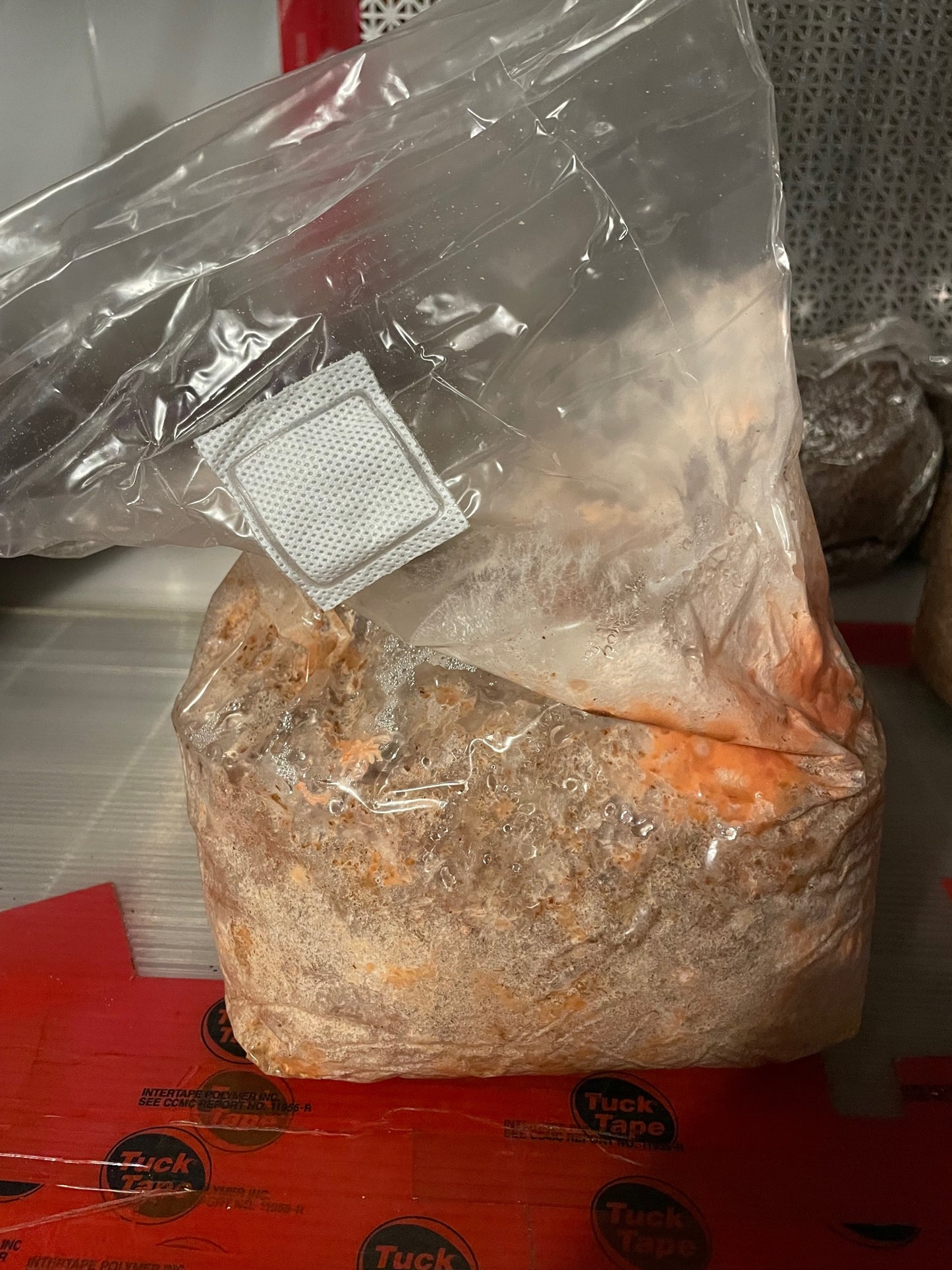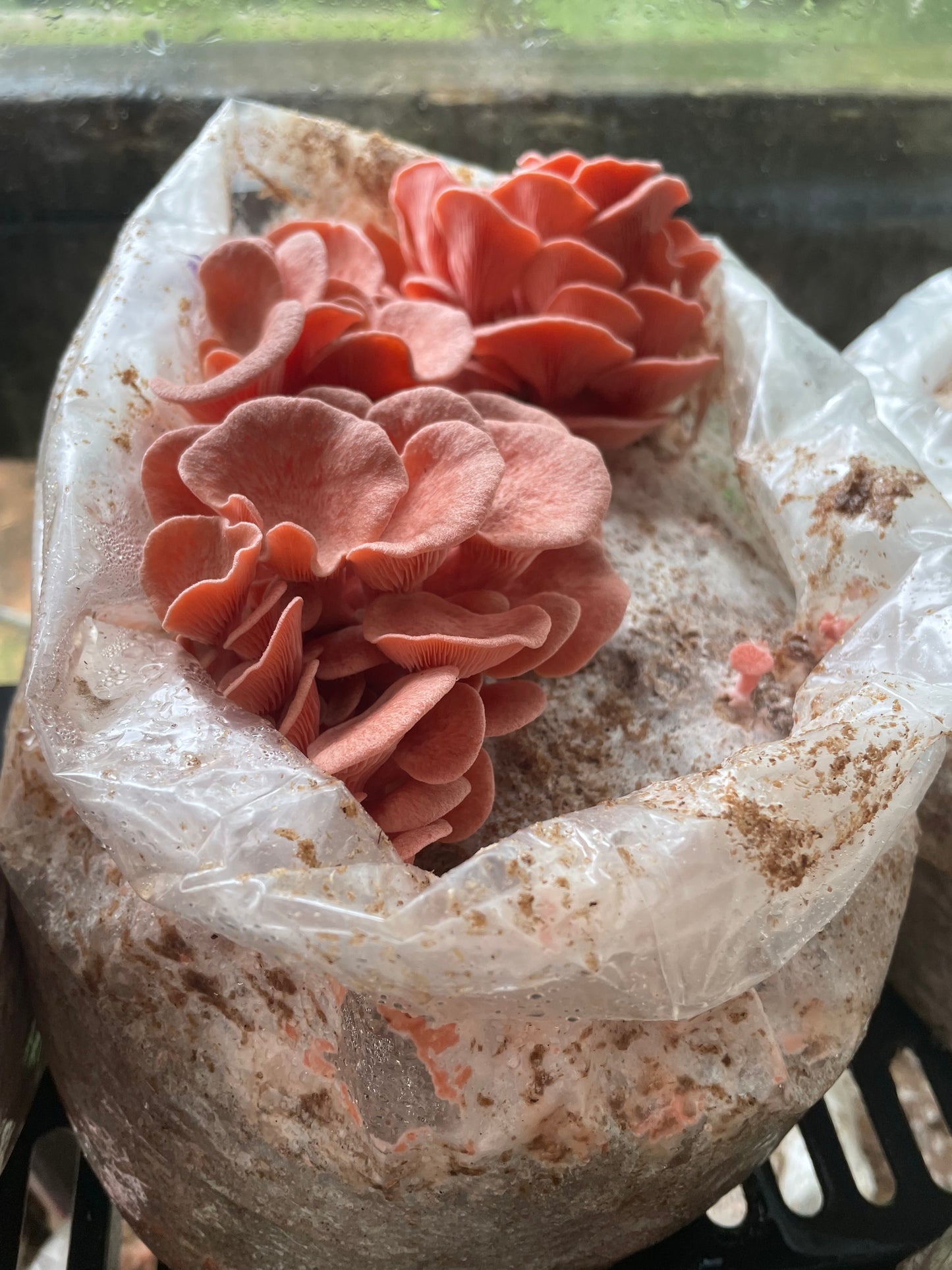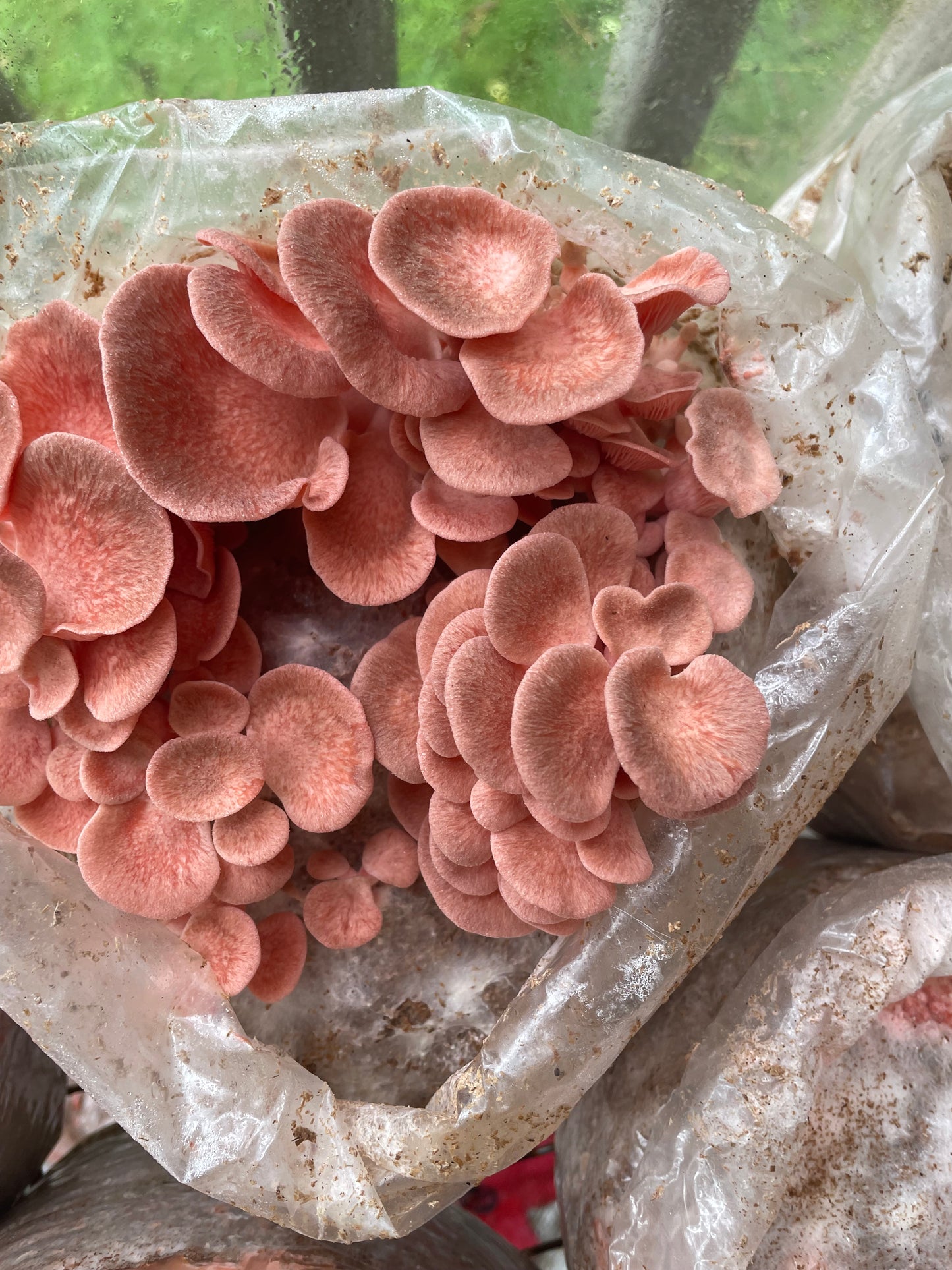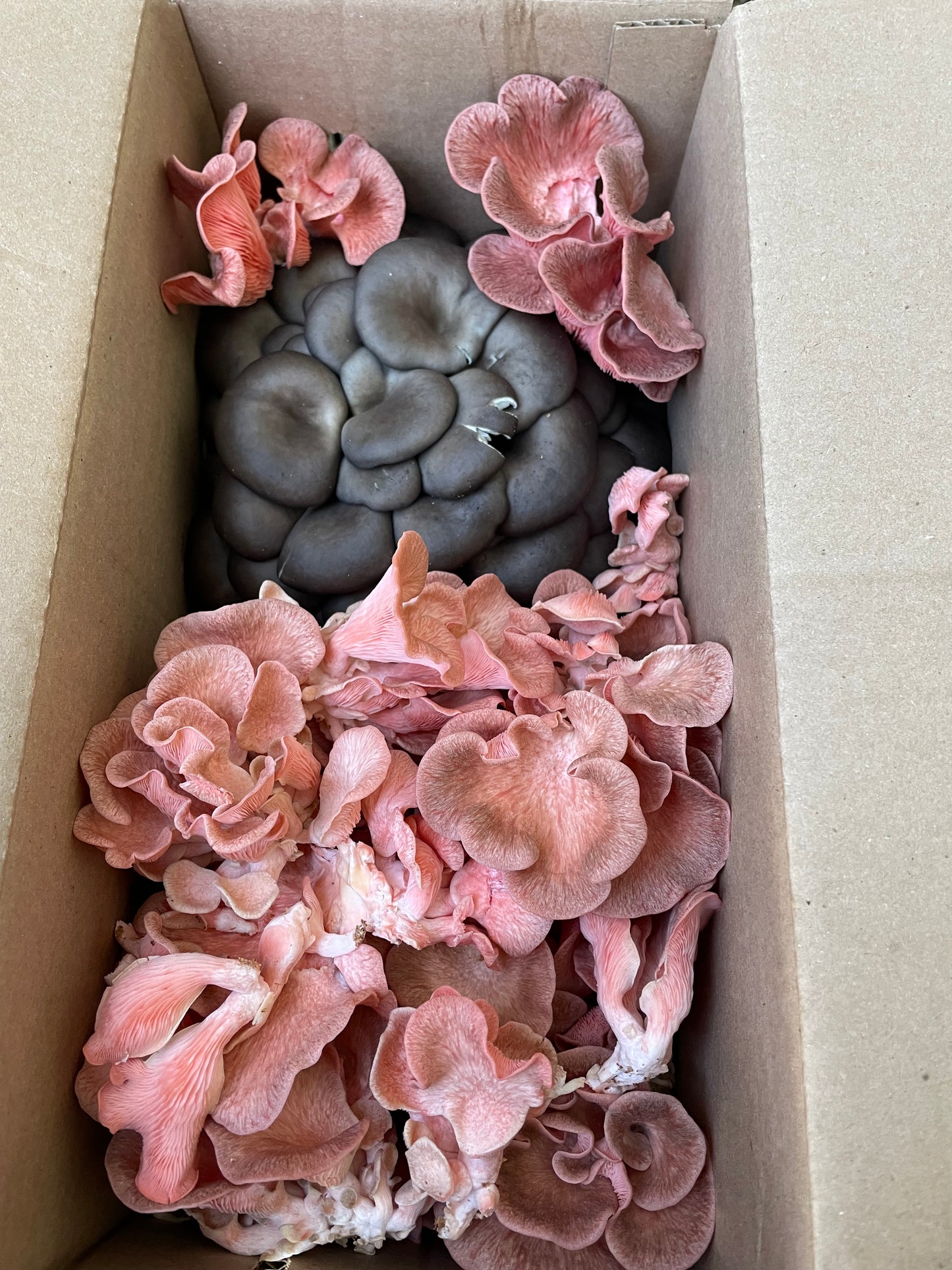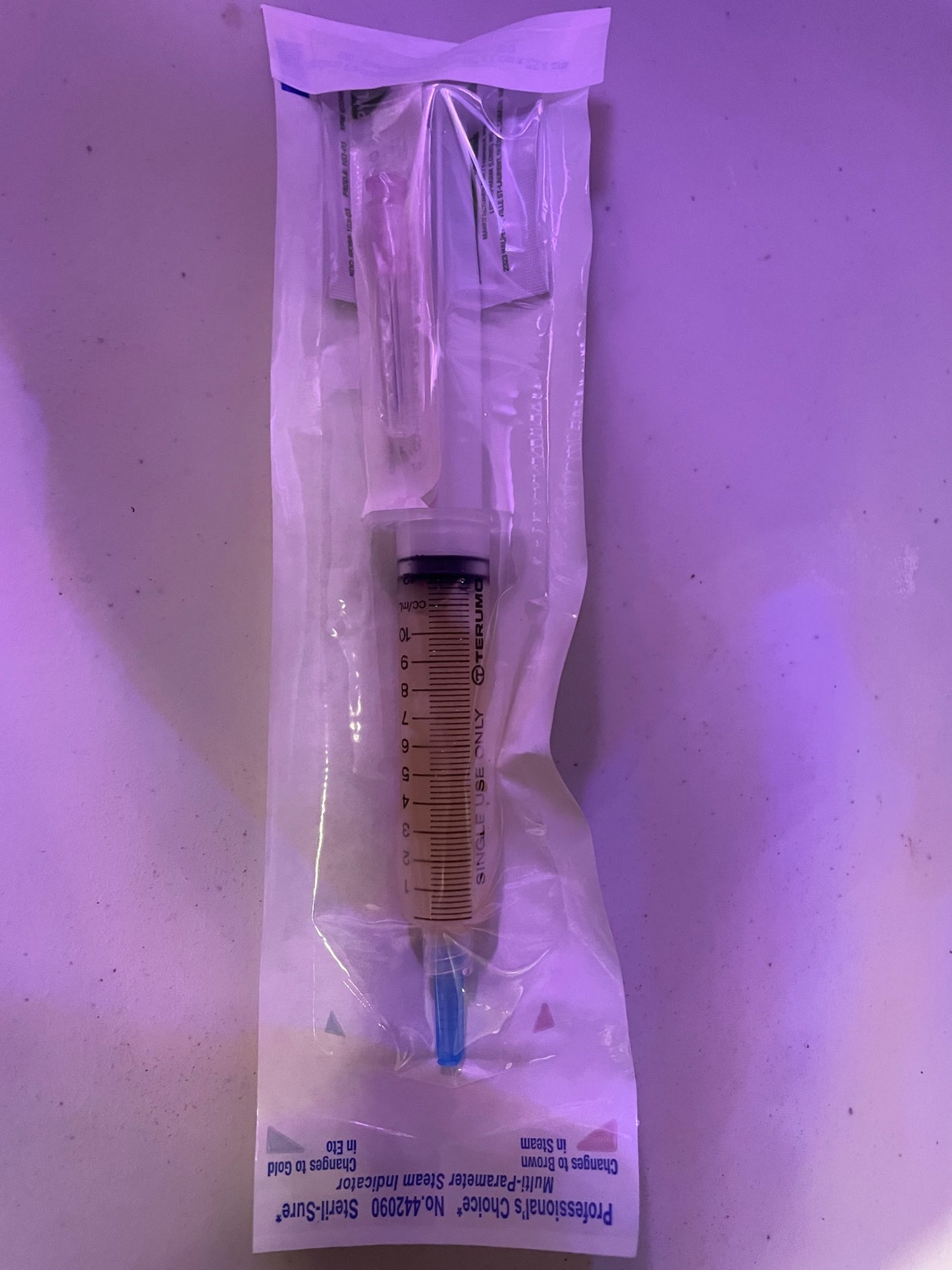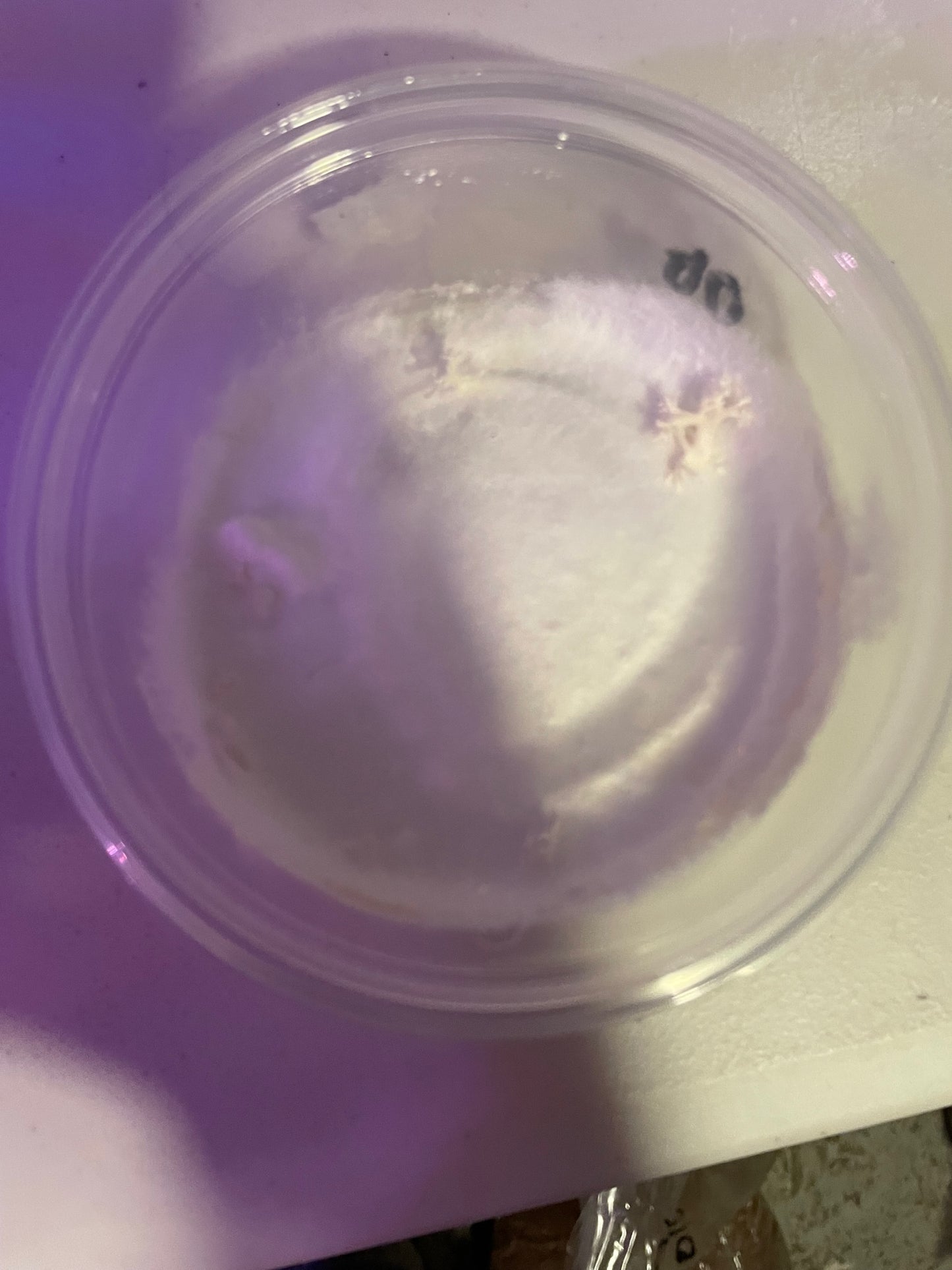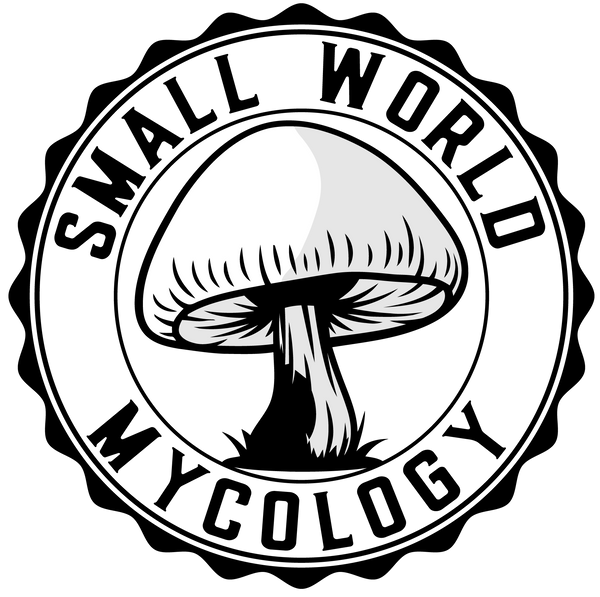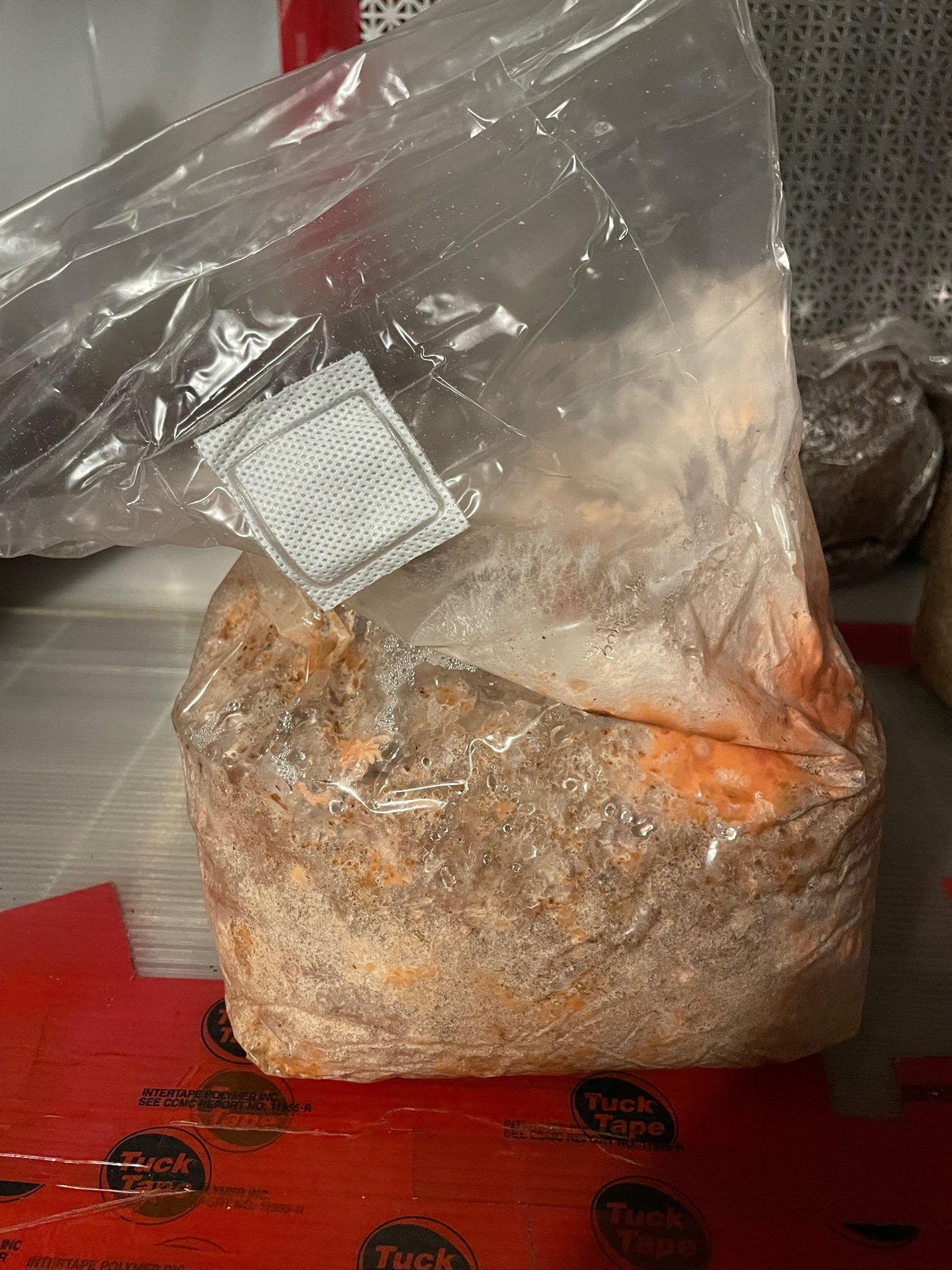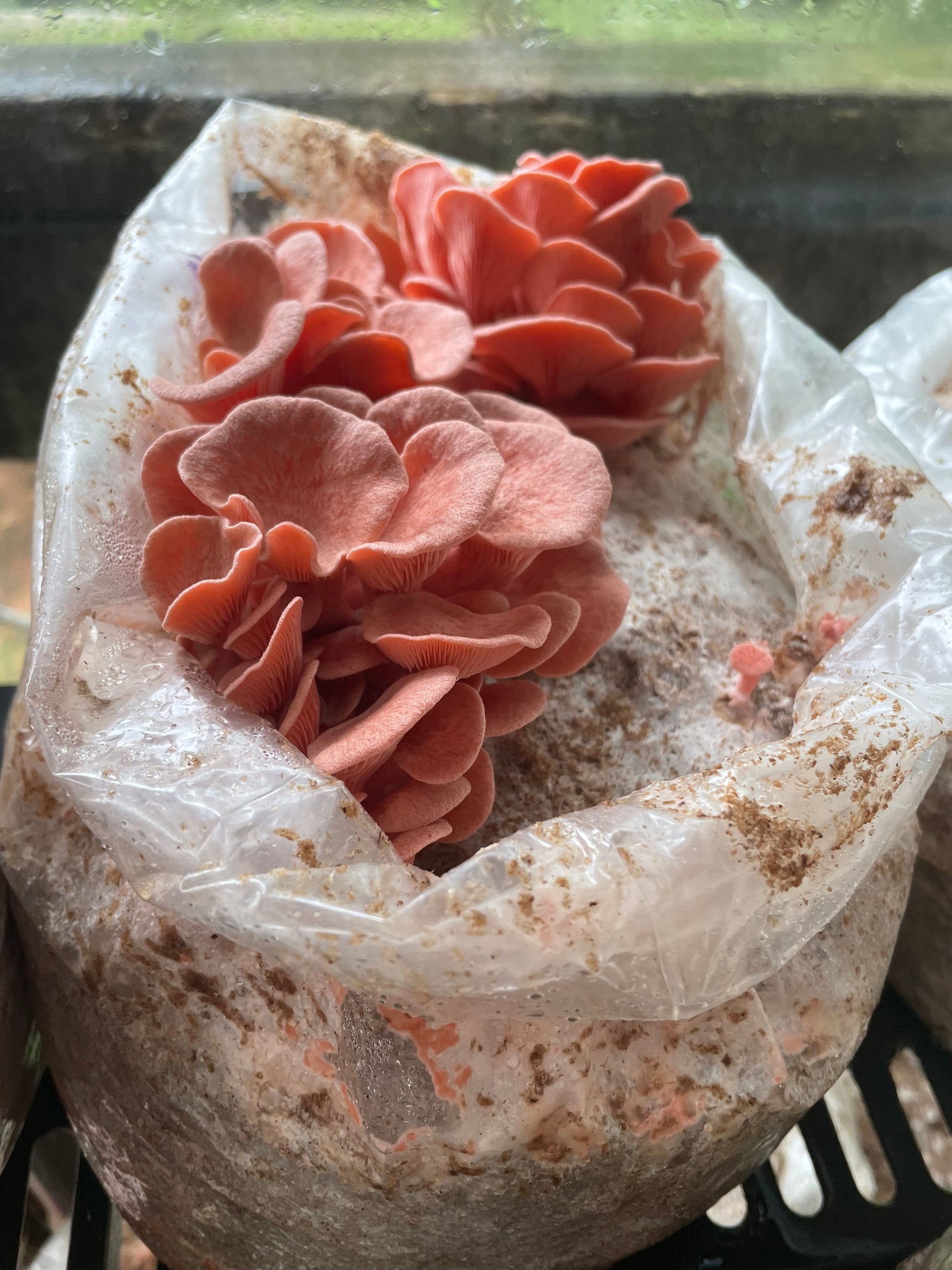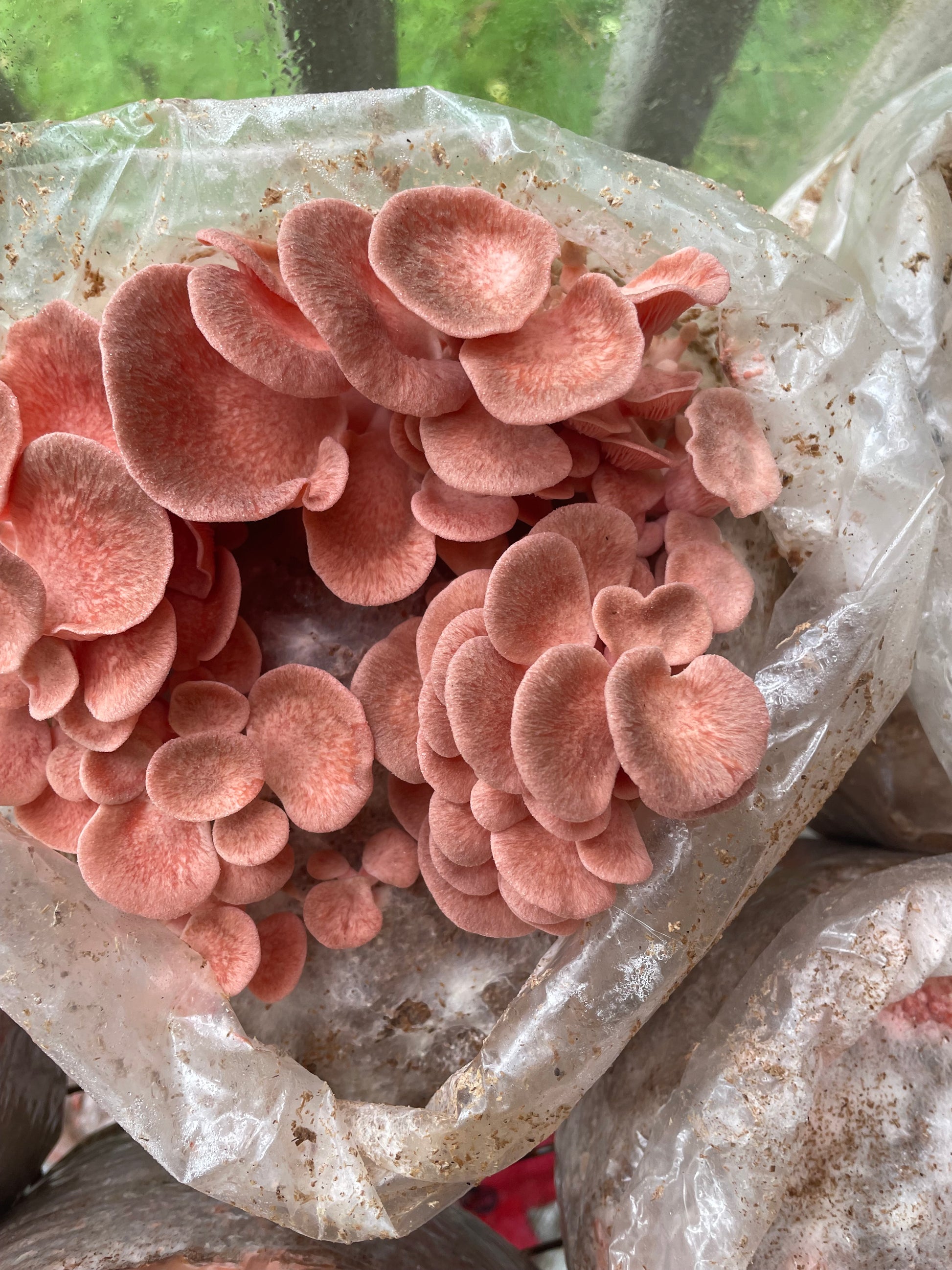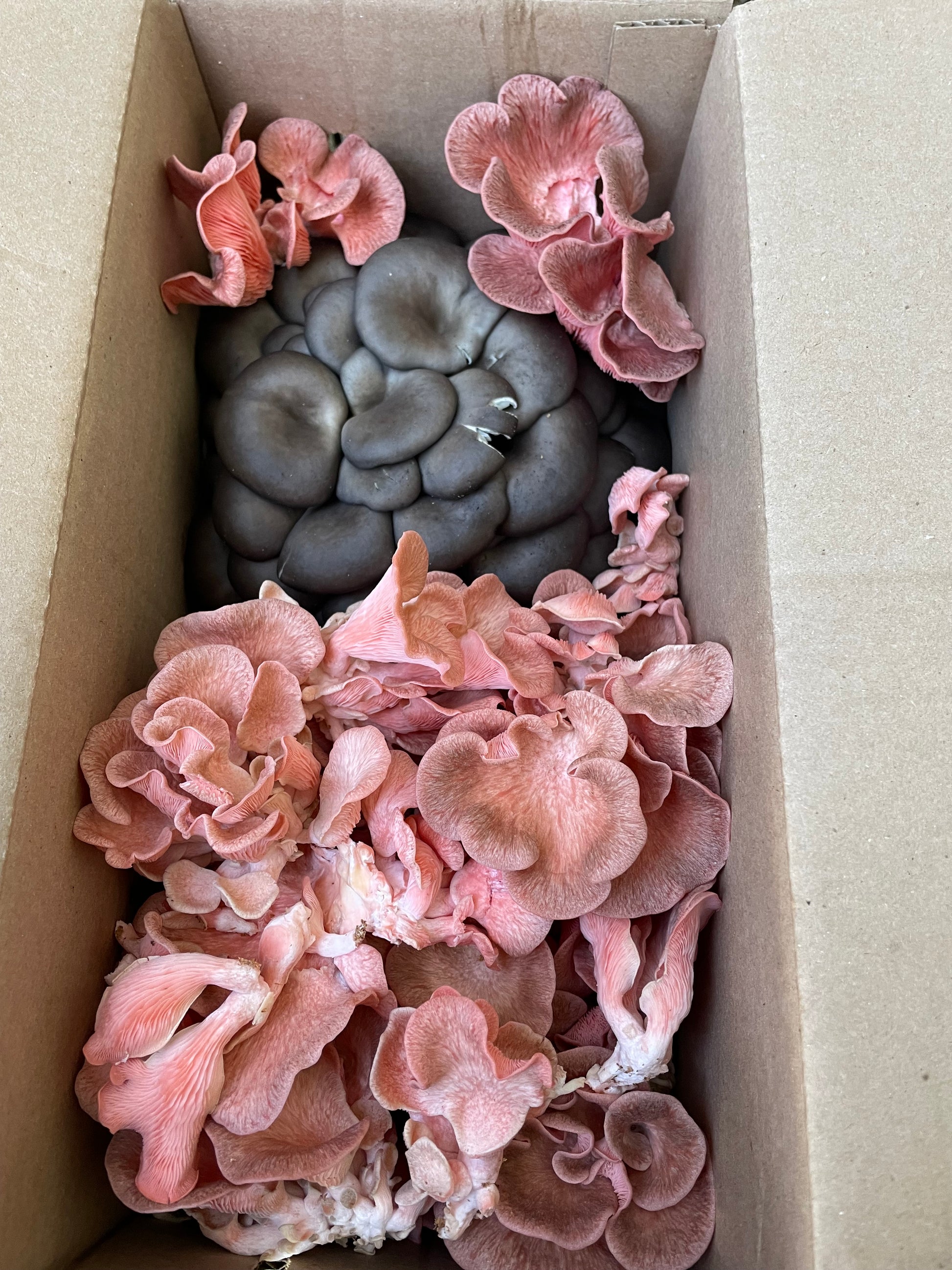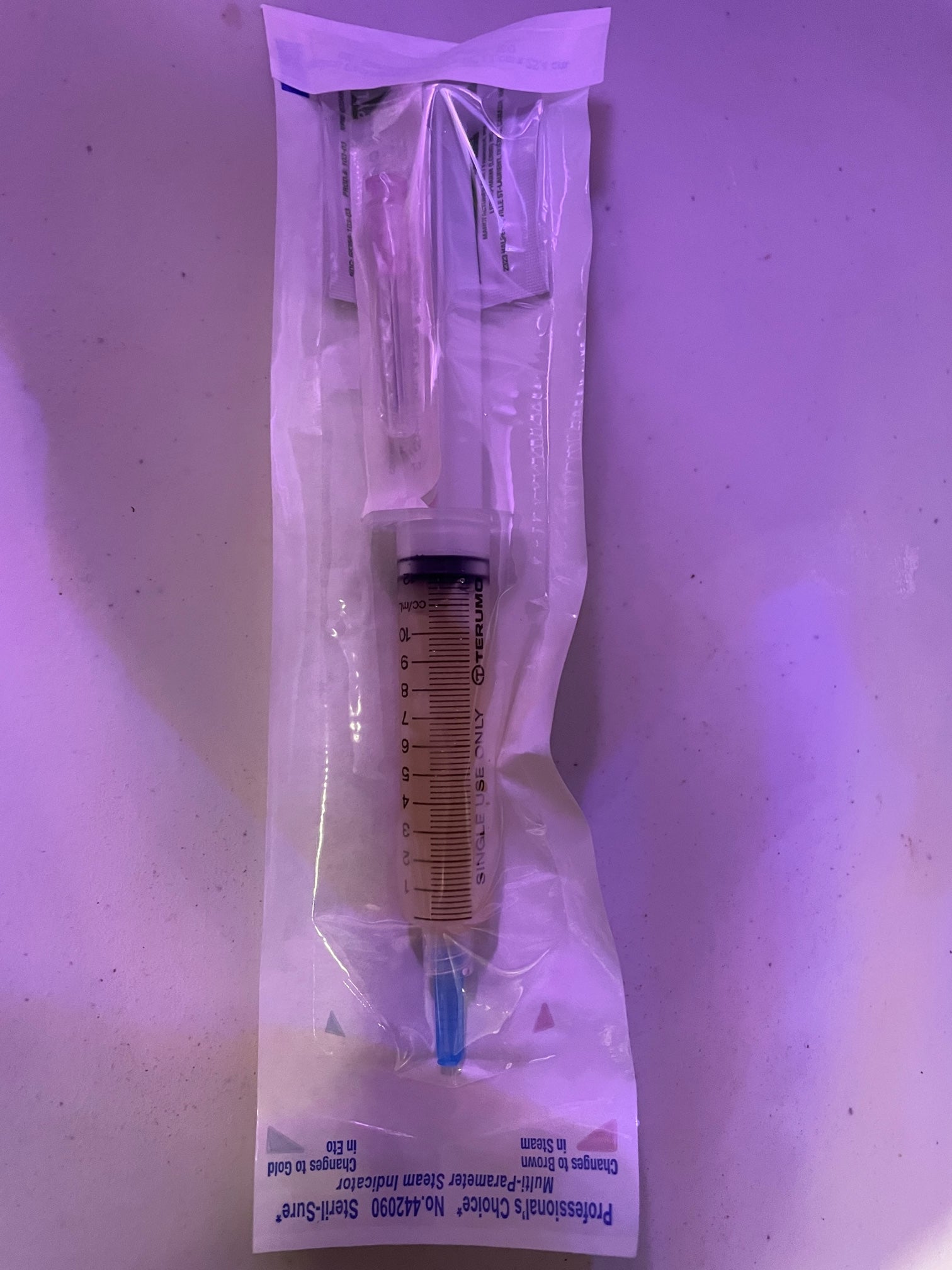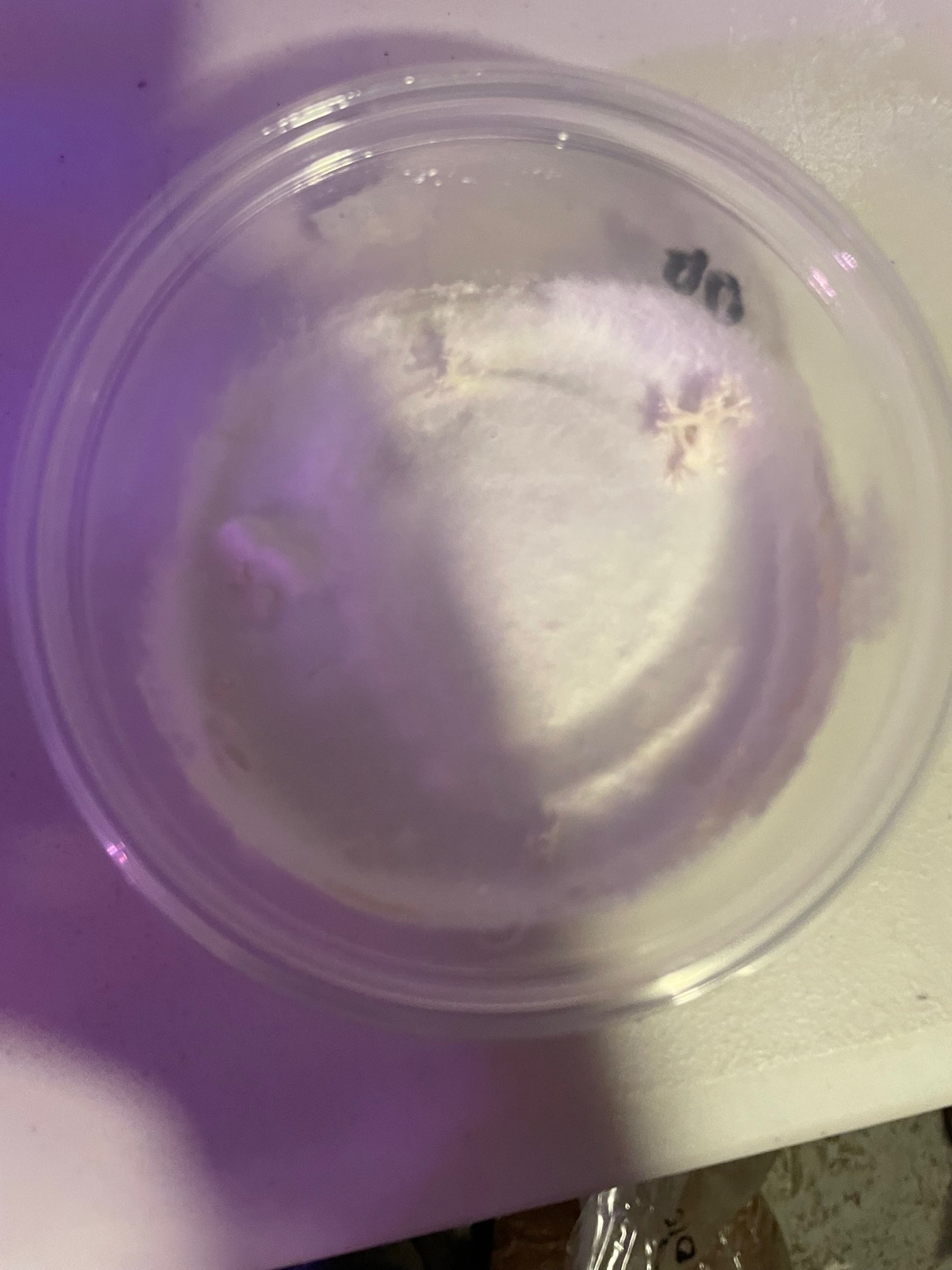Small World Mycology
Pleurotus djamor - Pink Oyster Genetics
Pleurotus djamor - Pink Oyster Genetics
Scientific Name: Pleurotus ostreatus
Common Names: Pink Oyster, Salmon Oyster, Strawberry Oyster, Flamingo Mushroom, Takiiro Hiratake, Tabang Ngunggut
Description: A medium, tender, delicious mushroom with a vibrant pink cap, gills, and stem, this cultivar forms large cluster bouquets of mushrooms. Pink oyster and other P. ostreatus species are some of the easiest to grow because they fruit using many substrates over a wide range of temperatures: Hardwood, straw, and coffee grinds can produce huge yields of beautiful fruitbodies. Pink Oyster is the best choice for the beginner in the heat of the summer or high temperature grow spaces. Pink Oyster will spread aggressively through the summer, but is not able to survive the Canadian winter as a perennial outdoor mushroom.
Growth ConditionsPetri Dish, Slant, or Liquid CultureGrowth Medium: Malt extract or potato water agarTemperature: 27 deg CSpawn RunGrowth Medium: supplemented hardwood sawdustTemperature: 27 deg CBag Filter Type: "A"Primordia FormationTemperature: 10-16 deg CHumidity: 95-100 %Time (days): 2-4 daysLight (Lux): 800-1500 luxFruit-body GrowthTemperature: 20-32 deg CHumidity: 80-95 %Time: 3-5 daysLight: 800-1500 luxHarvest Hint: With a moderately high humidity primordia will form at the location slits are cut in the bag. Alternatively the bag can be opened from the top and rolled down for top-fruiting, or set on one side which forms larger clusters of mushrooms in our experience. Harvest the mushroom before the cap edges turn upward and spore release begins. If the light level and airflow are too low the mushrooms will form an undesirable coral-like form.
Couldn't load pickup availability
